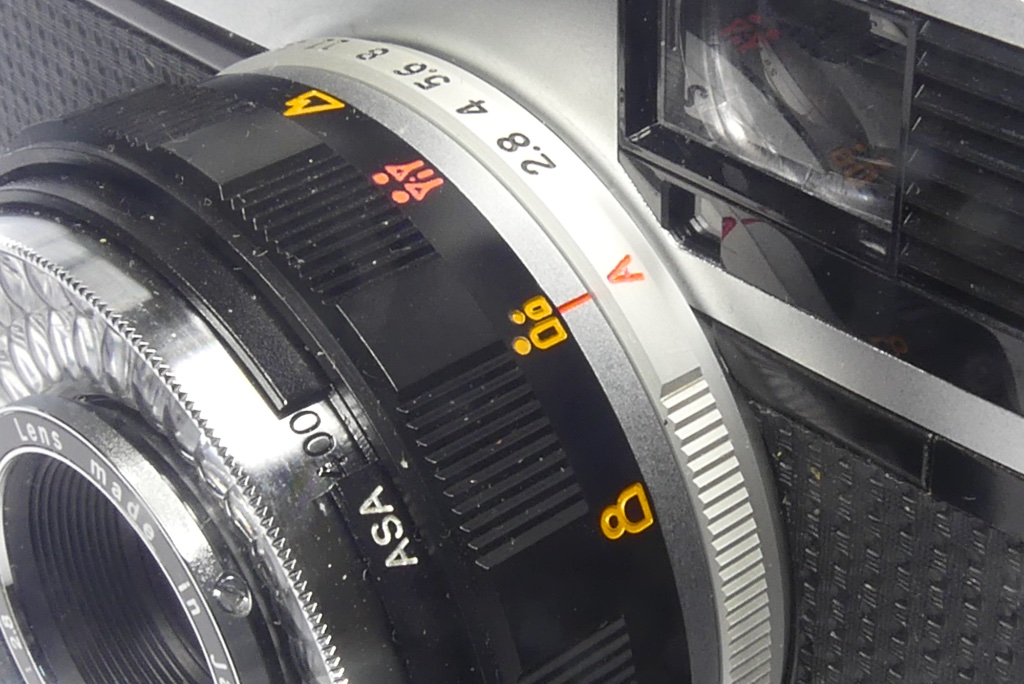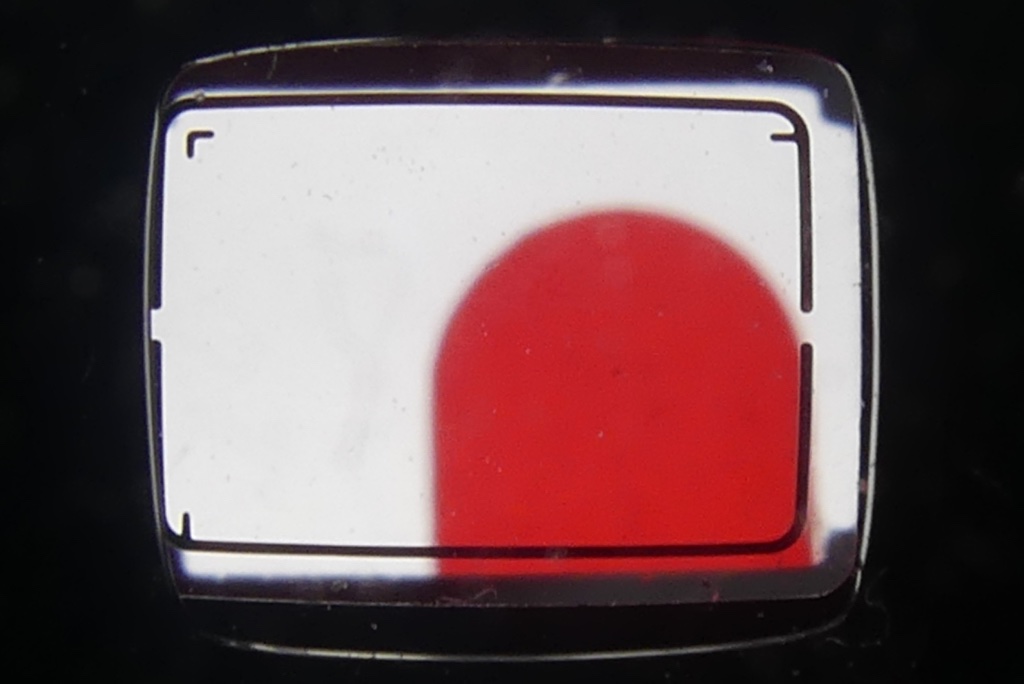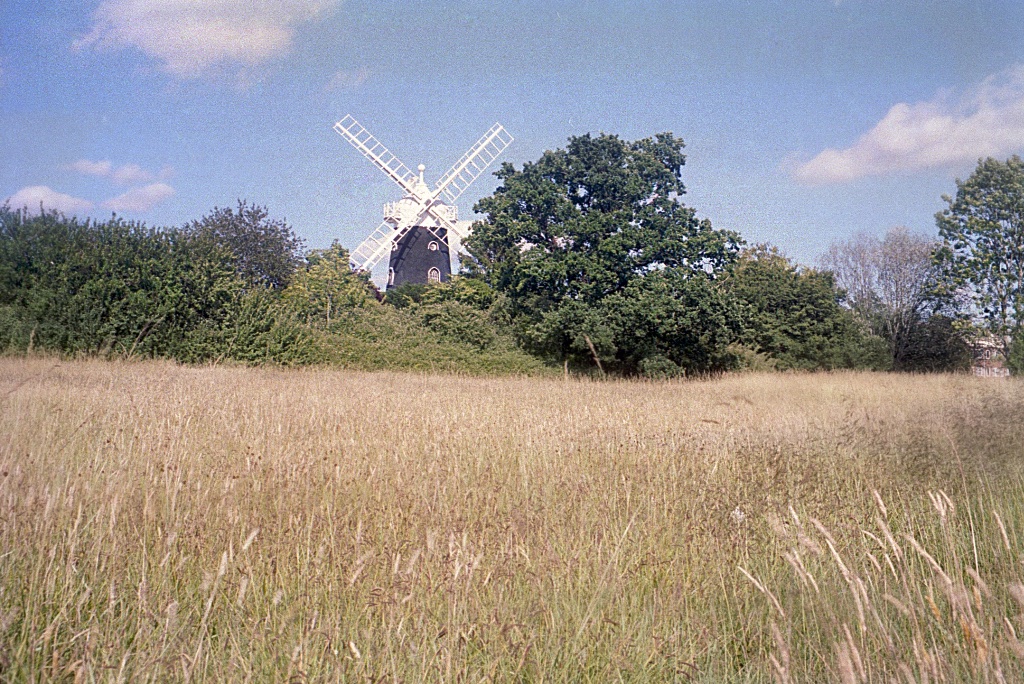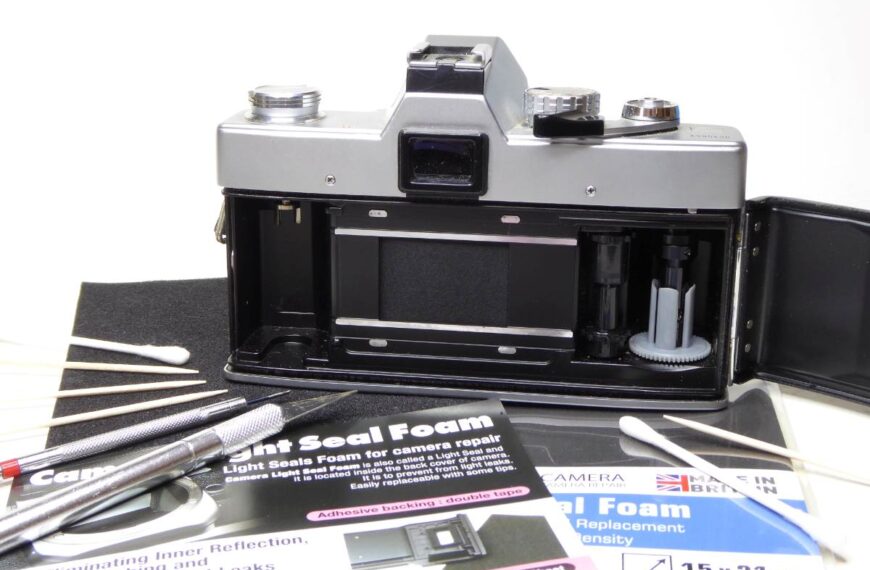
The Olympus Trip 35 Review :- More commonly known as just the Olympus Trip debuted in 1967 and Olympus carried on bashing them out right up until 1984. A 17 year production life which is something of a record for any camera and doubly so when you’re talking about a point and shoot, happy snappy for the masses.
As I have pointed out before in previous articles the 35mm SLR business was always a secondary consideration to most camera makers and the volume (and cash) was always in the point and shoot market. Olympus hammered out over ten million Trips (some sources mark that down to 7.5 Million units). To put that into perspective the professional class Olympus OM-1 sold around 1.3 Million units, the iconic Nikon F did around 1 million units and even Canons AE-1, low cost 35mm SLR for everyman with a massive marketing push behind it could only achieve 6 million units sold.
In the early 1970s most people never owned a camera much beyond a Kodak Instamatic but Olympus pushed a fair few into the Trip with its advertising featuring David Bailey (an OM-1 user). There was a great appeal back then for a simple, reliable camera that could deliver 35mm quality at a reasonable price and the Trip fitted the bill nicely.


As someone shooting professional cameras at the time the Trip was far below my needs but a recent find in a charity shop has turned me on to what a great little camera the Trip is.
Designed by the legendary designer Yoshihisa Maitani the Trip is a near perfect camera for its intended user. Like all of Maitani-sans designs the Trip is perfectly well balanced against user requirements and even 41 years after the last one was produced its very hard to find anything to criticise with the design decisions or the quality of the product. Simple, robust, no batteries required and with a sharp lens. The camera does all the work for you. The biggest challenge the average user would face was loading the film.
So lets take a close up look at the Trip…
The Technical Bit…
First thing to notice is the Zuiko 40mm f/2.8 lens renowned for its sharpness and clarity. The camera’s automatic exposure system would use either 1/40th or 1/200th to capture shots depending on the available light and a lens aperture from f2.8 to f22. The camera is fully automatic when placed in the ‘A’ mode selected by the ring around the lens. Now some people will wonder about such a slow speed at 1/40th especially if they have had previous exposure to other cameras and will have been led to believe you shouldn’t shoot slower than 1/60th but that is based on a 50mm lens. Generally speaking you should never have a shutter speed slower than the focal length of the lens in use. For a camera with a 40mm lens 1/40th is good enough. The camera will lock up the shutter if the light level is too low so it really does do all the thinking for you.

The camera also has f stops around the lens. These are not a manual override or a form of aperture priority they are there solely for flash use. You would use a flash guns computer wheel to tell you what f stop you need and would then have to dial that in to the camera to obtain perfect exposure with flash.
The lens also has a ring around it to decide on focus with both simple pictograms and distance scales on the opposite side of the lens.
The Trips viewfinder is bright and clear (assuming it’s a clean copy) with Bright-Lines in the viewfinder to show you what’s going to be in the final picture complete with marking for close in photography and a small sub-window that shows what the lens is set to (for instance ‘A’ mode and Distant objects as indicated by mountain peaks). There’s even a handy red flag that pops into view if the camera deems the light not good enough which will also lock up the shutter. The Trip with its relatively slow shutter speed and fairly fast aperture can pull a shot indoors under decent lighting.


It’s as simple as an Instamatic but with the benefit of higher quality 35mm film and of course a much sharper lens. The only down side to the Trip, unlikely to bother the sorts of people who were buying it back in its day, is the film speed limit of ASA 400. To be fair when the Trip came out 400 speed films were not common.
Buying into the Trip today…
The Trip was much favoured in its 1970s heyday by travellers who needed a good quality, lightweight, reliable and robust camera and it’s still a good choice today for the modern film aficionado on their travels or perhaps even doing street photography.
If you fancy buying one there are a number of shops selling refurbished Trips for a reasonable price.
Things to watch out for: –
Cloudy viewfinders – they can be cleaned quite easily by removing the top cover but be very careful doing this. The Bright-Lines can be scrubbed away if you use chemicals or are too rough. Breath and a gentle application of a cotton bud is all that’s needed.
Dead selenium cells – it’s the cell behind glass around the lens. These can fail from age but there are a number of speciality shops who can repair/replace these.
Stuck aperture leaves in the lens – usually indicated by the red flag not coming up in the viewfinder when light is too low. It’s fixable but unless you have the skills it’s best to leave this to a pro as getting the lens into correct focus again can be a trial.
You can bag up a trip for a very reasonable price. Mine cost £10 from a charity shop. It needed some cleaning up of the viewfinder but in all other respects was near perfect. If you don’t trust yourself with this kind of thing you can buy reconditioned ones from around the £175 mark.
If you can find one the earlier version made up until 1978 is the most collectible. It’s easily spotted by the shutter button being a chromed metal. The later version has a black plastic button instead.
Shooting the Trip Today…
It’s a nifty little pocket rocket of a camera. Fuss free, pretty much you just have to set the ASA rating on the camera and then wind on and shoot. Winding on is via a small thumbwheel on the rear of the camera body, it’s light to turn and helps keep the camera compact and snag free. Keep an eye out to make sure it stays on the ‘A’ setting and of course be mindful of your focus ring that it’s set correctly for your target focus.
I bashed out just a few pictures on some expired Fuji Superia 200 just to make sure mine was running ok and to see what the camera could do under a range of conditions. These are some sample shots from the test shoot and notes with the pictures to give you an idea of just how good the Trip can be.




As I said in the intro – it’s as perfect camera as you will find for the non-expert or occasional film photographer and just as well suited for the expert user looking for an uncomplicated point and shoot for travel or fun. Compact, light, simple to use and robust. I’d be hard put to think of another camera that has the simple charms of the Trip and is as well made and it’s no surprise Olympus sold so many of them back when I was shooting OM-1s.
I recently enjoyed the fuss free shooting of the Konica Pop – the Olympus gives the same freedom but in a much better made package which is a lot nicer to use and coupled with a vastly better lens.
Bugger off now and shoot some film….

Further Reading

Mel is one of the driving forces behind High 5 Cameras and writes all our articles.
Starting serious photography back in 1972. Over the years she got to shoot film with most of the major brands in 35mm and large format as both a studio photographer and content provider for websites in the early life of the web. These days she is rediscovering photography and has become the GOTO person for knowledge on camera repair advice.

